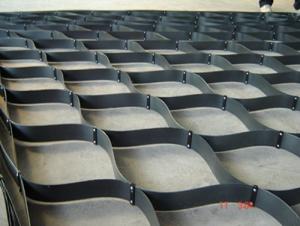Now imagine the versatility and novelty of geotextile woven fabric. It is a distinct material that has found applications in different areas on modern construction fields. From roads and railways to embankments and retaining walls, its unique characteristics make it a vital ingredient for a number of projects. In this article, let us take a look at the world of geotextile woven fabric, its advantages as well as how it contributes to successful construction projects.
The Magic of Geotextile Woven Fabric
The first time I came across geotextile woven fabric I was entranced by what it could do. That’s not just cloth; it can solve most building problems. Geotextile woven fabrics are durable because they are often made from synthetic materials like polypropylene, polyester or nylon which withstand the test of time and environmental factors. Its lattice-like weave resists dimensional changes while ensuring excellent water flow through pores, making them easier to use when filtration or separation processes are needed.
Benefits of Geotextile Woven Fabric
One of the major benefits geotextiles possess is soil reinforcement capability. It reinforces soil thus giving it strength and stability hence avoiding deformations and enhancing load-bearing capacity. This feature comes in handy especially in regions prone to erosion, landslides, or those with weak and unstable soils.
Another significant benefit is its filterability properties. The different types of soil can be separated by using this fabric but still allowing water through so that the mixture does not occur between soil particles thereby sustaining the integrity of buildings which strongly rely on water drainage such as retaining walls.
Durability and Environmental Resistance
Geotextile woven fabric is designed for durability purposes only. It is made from synthetic materials that withstand harsh climatic conditions, UV radiation and various chemicals making sure that the textile continues functioning throughout its lifespan. This endurance is a proof of how well-made geotextile woven fabric is and that it has long-term alternatives for building projects.
Applications in Construction
Geotextile woven fabric is a jack-of-all-trades in construction industry. It finds application in different areas, such as:
Roads and Highways: Geotextile woven fabric serves as reinforcement to the subgrades on roads and highways making them compact and sturdy enough to withstand the heavy loads associated with vehicular traffic.
Railways: In railway constructions, geotextile woven fabric is also used to reinforce the track bed and serve as a foundation for tracks just like road constructions.
Embankments and Slopes: In areas where there is a risk of landslides or erosion, geotextile woven fabrics help in soil reinforcement thus controlling soil movement.
Retaining Walls: The fabric provides structural support and prevents wall collapse due to soil pressure against it.
Drainage Systems: Geotextile woven fabric helps prevent clogging by filtering out soil particles from flowing water thereby increasing its efficiency when used as part of drainage systems.
Geotextile woven fabric: about it.
There was a time I was involved in a project which required the use of geotextile woven fabric to stabilize a slope. This area was prone to erosion and conventional methods had failed to prevent soil loss. The introduction of geotextile woven fabric marked a turning point. It did not only stabilize the slope but also enhanced the beauty of this place. The material incorporated seamlessly into nature, and thus its resilience and toughness were evident throughout the ensuing months.
The Future of Geotextile Woven Fabric
As construction techniques evolve ,and new materials are created, geotextile woven fabric is still one of the industry’s front runners. This is because it is all-rounded, extremely long-lasting and capable of solving intricate construction issues; hence making it one of the most crucial materials for contemporary building projects. In line with this, I can’t wait to witness how geotextile woven fabrics will be used in innovative ways for creating stronger and more sustainable structures.
In conclusion,
Geotextile woven fabric is more than just a material; it’s a key component in the success of many construction projects. Its distinctive characteristics along with its applications have made it an indispensable tool for engineers and builders alike. As we continue exploring what else can be done with geotextiles, I am sure that they will greatly affect future buildings being constructed .So next time you are on a road, walking along railway or looking at retaining wall remember those that last how come these things are possible thereby acknowledging how magical geo textile cloth can be since all these things cannot happen without its use.







